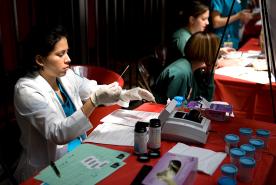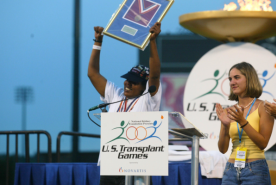November 15, 2022
According to the FDA, more than 80% of Americans aren't getting enough foods from the Dietary Guidelines, like fruits, vegetables, and whole grains–while eating too many added sugars, saturated fat, and sodium. Consequently, diet-related diseases like diabetes, high blood pressure, and heart disease are rising.
To combat these diseases, advance health equity, and improve nutrition, a new rule has been proposed to redefine what manufacturers can label “healthy.”
“Healthy,” reinvented
What’s the change? If passed, food manufacturers will have to use more whole foods, like fruit and vegetables, and fewer empty calories, like added sugar, in “healthy” products.
Understanding labels at a glance
These proposed guidelines mean that those with kidney disease and those at risk of developing kidney disease will be able to tell at a glance if the food item has too much saturated fat, sodium, or added sugar.
The cost of consuming too much:
- Added sugar: Naturally occurring sugar can be good for you if eaten in moderation. Added sugars, like white table sugar, aren't beneficial and can make it more difficult to control blood sugar levels. Over time this may lead to health problems like diabetes– a leading cause of kidney disease and kidney failure. Here are six foods with added sugar that may surprise you.
- Saturated fat: Eating high amounts of saturated fat can raise your 'bad cholesterol,' increasing the risk of developing heart disease, obesity, and kidney disease. Here are examples of healthy fats and oils and how to use them.
- Sodium: Eating too much sodium, a mineral found in salt, can raise blood pressure, increasing the risk of high blood pressure, heart disease, and kidney disease. Here are six ways to help improve your blood pressure.
The FDA is also working on:
- Developing a front-of-package label to help people quickly identify “healthy” foods.
- Making it easier to find nutrition information while online grocery shopping.
- Working with manufacturers to lower sodium content in the food supply.
- Working with communities to see how the federal government could help lower added sugar consumption.
- Reach parents and caregivers regarding new recommendations and help lower exposure to toxic elements in food.
We invite you to participate in the conference and share how nutrition has affected your kidney journey.
How the FDA can help kidney patients
[VIDEO::http://www.youtube.com/watch?v=3A0oTIxIX1E::aVideoStyle]
The new definition was proposed shortly after the National Conference on Hunger, Nutrition, and Health, which aims to increase access to healthy food, lower poverty, and help people live healthier lives. While this is a great start, NKF hopes to expand discussions to include kidney-health-specific policies.
We ask the Administration:
- Expand Medical Nutrition Therapy (MNT): Medicare currently only covers those referred by a physician with diabetes and kidney failure. Access should be expanded to include a broader range of medical issues that could lead to kidney disease, like prediabetes, obesity, and high blood pressure. Share your support for expanding MNT.
- Mandate phosphorus labeling on foods: There is increasing evidence that lower phosphate levels in the blood will benefit the general public and those with kidney disease.
- Expand access to medically tailored meals and produce prescriptions: Allow more people to access these vouchers provided by healthcare providers for specific foods like fruits and vegetables.
- Focus on maternal nutrition: Poor maternal nutrition can lead to fetal abnormalities that could lead to kidney disease in the future.
- Partner with community-based organizations, like NKF: Partnering with organizations that already have the initiative to address the issue of food insecurity can help reach more people more quickly.
Learn more about NKF's policy recommendations to help reduce the burden of kidney disease.


















